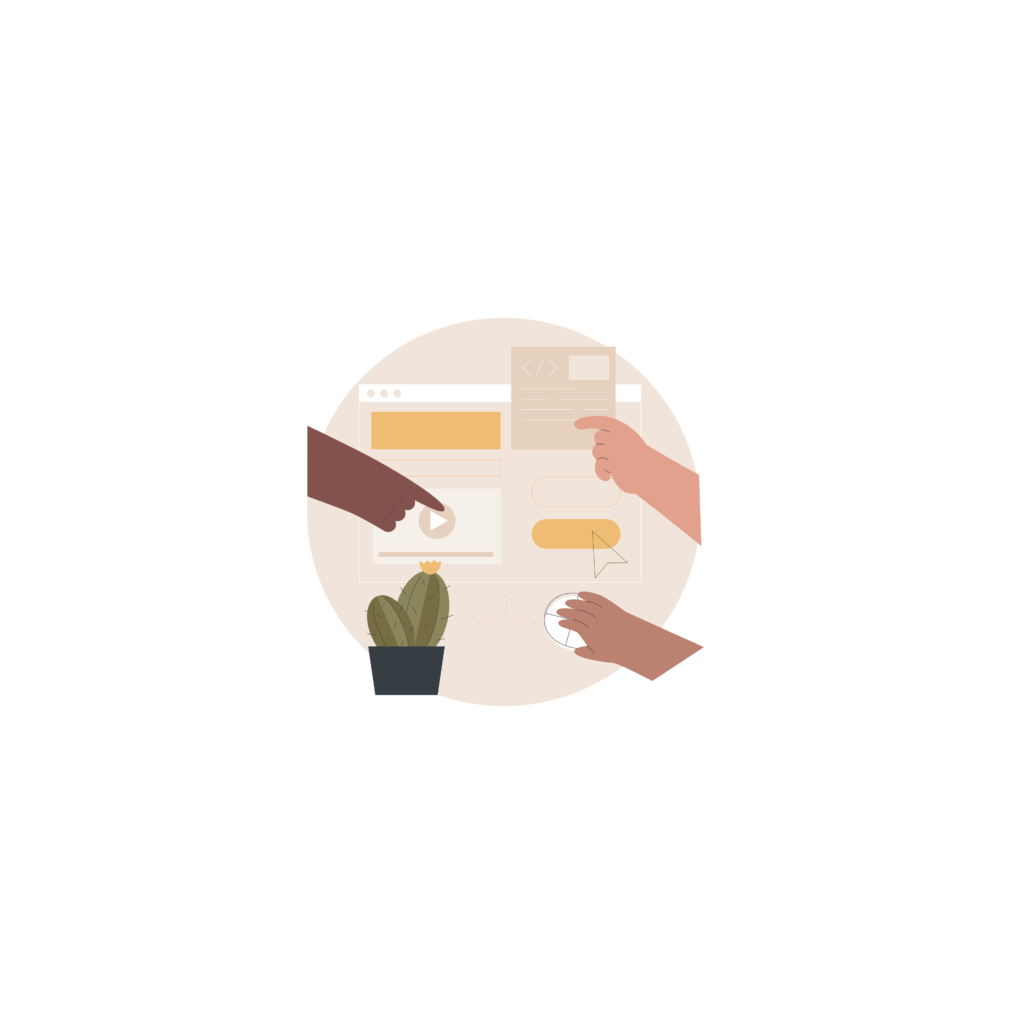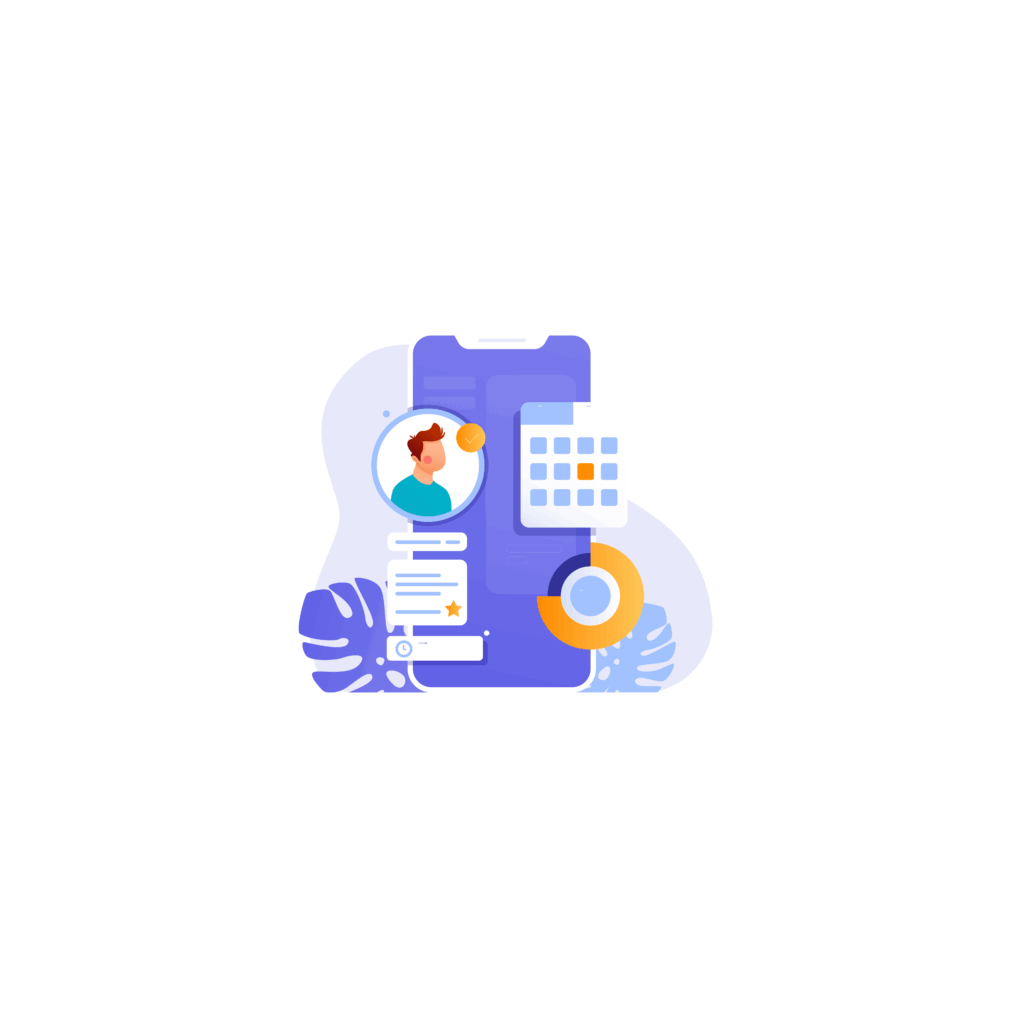Key Highlights
- SaaS architecture is important for cloud-based software solutions, allowing businesses to deliver applications efficiently.
- Choosing the right architecture model—single-tenant vs. multi-tenant, microservices vs. monolithic—is crucial for scalability, performance, and security.
- Understanding your business objectives, performance needs, security requirements, and compliance regulations is vital for selecting the optimal SaaS architecture.
- Implementing best practices such as data encryption, access control, regular backups, and disaster recovery plans is essential for ensuring data protection in a SaaS environment.
Software as a Service (SaaS) has revolutionized how businesses deploy, access, and manage software applications. From small startups to large enterprises, companies are leveraging SaaS solutions to drive efficiency, reduce costs, and scale rapidly. However, the success of a SaaS product heavily depends on its underlying architecture.
Choosing the right SaaS architecture model is a critical decision that affects security, scalability, performance, and long-term operational costs. Whether you’re building a new SaaS platform or optimizing an existing one, it is essential to understand the different architecture models, such as single-tenant, multi-tenant, and hybrid. Each model has distinct advantages and challenges that make it suitable for different business needs.
This comprehensive guide explores the core SaaS architecture models and their benefits, limitations, and best use cases, helping you make an informed decision that aligns with your business goals and customer expectations.
What is SaaS Architecture?
SaaS architecture defines the framework in which cloud-based applications are designed and deployed.
It is the technical setup of software delivered over the internet, and users can access it through a web browser. The architecture allows multi-tenancy, meaning one application can serve many customers, known as tenants, using the same infrastructure.
SaaS architecture is a key part of the digital ecosystem that can affect security, scalability, performance, and cost. Businesses should choose the architecture model based on their special needs, the model’s features, the target audience, the budget, and future goals.
SaaS products can help with many needs, like customer relationship management (CRM), project management, email marketing, and accounting.
By trusting SaaS providers with technical issues, businesses can make their operations smoother and save on IT expenses. This way, they can focus on what they do best. It helps companies be more agile, quick, and competitive in the fast-changing digital world.
Core Components of SaaS Architecture
A strong SaaS architecture has several key components that work together to create a smooth user experience. Data centers provide the essential computing power, storage, and network connections needed for the application.
An effective SaaS architecture combines the components that ensure scalability, security, and reliability. Here’s a breakdown of the core components of SaaS architecture.
1. Application Layer
The application layer powers the SaaS platforms. This layer is responsible for delivering seamless user experiences and handling application workflows. The application layer contains the following elements.
- User Interface (UI): Frontend design and user interactions.
- Business Logic: Processes data and manages application rules.
- APIs: Allow integration with third-party services and facilitate communication between different components.
2. Data Management Layer
This layer handles data storage, retrieval, and security. The choice between single-tenant and multi-tenant databases impacts how data is stored and accessed.
- Database Management System (DBMS): Ensures efficient data storage and retrieval.
- Data Security & Encryption: Protects sensitive customer information.
- Backup & Disaster Recovery: Provides data integrity and availability in case of failures.
3. Security & Identity Management
Security is critical in SaaS architecture to prevent unauthorized access and data breaches.
- Authentication & Authorization: Uses mechanisms like Single Sign-On (SSO), OAuth, and Multi-Factor Authentication (MFA).
- Role-Based Access Control (RBAC): Ensures users have appropriate permissions.
- Compliance & Regulatory Standards: Adheres to industry regulations like GDPR, HIPAA, and SOC 2.
4. Infrastructure Layer
The infrastructure layer provides the computing, storage, and networking resources required to run the SaaS platform efficiently.
- Cloud Hosting Providers: AWS, Google Cloud, or Azure provide infrastructure as a service (IaaS).
- Load Balancing: Distributes incoming traffic to ensure performance and prevent server overload.
- Auto-Scaling: Adjusts resources based on demand to optimize performance and cost.
5. Monitoring & Performance Management
SaaS applications require continuous monitoring to ensure uptime, performance, and reliability.
- Application Performance Monitoring (APM): Tracks application health and performance metrics.
- Logging & Error Tracking: Identifies issues and provides real-time alerts.
- Service Level Agreements (SLAs): Defines expected performance and availability standards.
6. Integration & API Management
Modern SaaS solutions need to integrate with various external services and platforms to enhance functionality.
- RESTful & GraphQL APIs: Enable seamless data exchange.
- Webhooks & Event-Driven Architecture: Allow real-time communication between systems.
- Third-Party Integrations: Connect with CRM, ERP, payment gateways, and other tools.
7. DevOps & Continuous Deployment
A strong DevOps pipeline ensures smooth development, testing, and deployment processes.
- CI/CD Pipelines: Automates code integration, testing, and deployment.
- Infrastructure as Code (IaC): Enables scalable and repeatable infrastructure management.
- Containerization & Microservices: Uses Docker and Kubernetes for efficient scaling and modular application architecture.
Hence, the core components of SaaS architecture, such as application servers, handle user requests and run core functions, while load balancers distribute traffic to keep performance smooth. Security tools like firewalls and access controls protect user data, ensuring a reliable and safe experience.
Types of SaaS Architecture Models
Choosing the right SaaS architecture model is crucial as it affects your app’s customization, security, and cost. The two primary SaaS architecture models are:
- Single-tenant architecture
- Multi-tenant architecture.
You may also adopt a Hybrid SaaS model that incorporates the components of both architectures. It balances security, customization, and cost efficiency.
Let’s look at the advantages and challenges of each model to make a better decision.
Single-Tenant SaaS Architecture
A single-tenant architecture provides each customer with their version of the application and its infrastructure, like databases and servers. This model ensures that no other customer shares the application’s infrastructure. Single-tenant SaaS architecture ensures better security and customization for each user.
Advantages of Single-Tenant Architecture
1. Enhanced Security and Data Privacy
Single-tenant architecture provides an isolated instance to each user, minimizing the risk of data breaches or cross-contamination. Since the architecture does not share databases or storage, unauthorized access to one tenant’s data does not compromise others. This model is ideal for industries handling sensitive or classified information, such as healthcare, government, and finance, that deal with compliance risks.
2. Greater Customization
Businesses can modify the software to fit their specific needs, including customization of UI/UX and integrations with proprietary systems. Users can apply tenant-specific updates without waiting for a universal release date. Enterprises that require highly specialized workflows, such as legal or manufacturing sectors, can benefit from the flexibility.
3. Better Performance and Reliability
Dedicated resources ensure that the performance of one customer does not affect another. Such resources can be scaled up or down based on individual needs without impacting others. Moreover, failure in one instance does not cascade across multiple customers. Single-tenant SaaS architecture is suitable for mission-critical applications where downtime is unacceptable, such as banking transactions, emergency healthcare systems.
Challenges of Single-Tenant Architecture
While single-tenant architecture offers strong security and customization benefits, it comes with several challenges, especially higher cost and maintenance. Here are some major challenges of single-tenant architecture.
1. Higher Costs
Single-tenant deployment requires separate infrastructure and databases for each tenant, driving up capital and operational costs. Moreover, some software vendors also charge higher licensing fees than for multi-tenant models. Unlike multi-tenant setups, single-tenant architecture may lead to inefficient resource utilization.
2. Limited Scalability
Scaling requires provisioning new infrastructure for every additional tenant, making it more complex and slower compared to multi-tenant models. Since each tenant requires setting up new tenants, it increases deployment time. Similarly, companies with a sudden surge in users may struggle to scale efficiently.
3. Increased Maintenance Effort
Since each instance is separate, updating or patching the system requires independent deployments, increasing maintenance overhead. This system requires manual provisioning for software upgrades, security fixes, and bug patches. Each issue needs to be resolved on a per-tenant basis. Therefore, single-tenant architecture leads to higher operational costs and slower response times for maintenance.
Single-tenant architecture comes with trade-offs in cost, scalability, and maintenance. Since it is secure and customizable, it is best suited for highly regulated industries such as healthcare, finance, government, and large enterprises with stable growth and dedicated IT teams.
Multi-Tenant SaaS Architecture
Multi-tenant SaaS architecture is a cloud-based model where multiple customers share the same application instance and infrastructure while maintaining logical data separation. This approach is widely adopted by SaaS companies as it is cost-efficient, scalable, and easy to maintain.
Advantages of Multi-Tenant Architecture
1. Cost Efficiency
Since resources are shared among multiple tenants, operational and infrastructure costs are significantly reduced, making it a cost-effective solution. SaaS providers benefit from economies of scale of sharing software licenses across multiple tenants, reducing expenses related to hardware, maintenance, and energy consumption. Hence, multi-tenant architecture saves cost in comparison to single-tenant SaaS architecture.
2. High Scalability
Multi-tenant SaaS architecture allows adding new tenants seamlessly since the underlying infrastructure supports dynamic scaling. Cloud-based multi-tenant SaaS platforms leverage auto-scaling to handle increased workloads without manual provisioning, making it ideal for growing businesses.
3. Simplified Maintenance and Upgrades
Multi-tenant SaaS architecture allows to roll out updates, security patches, and feature enhancements to all tenants simultaneously. With a single codebase, this ensures consistent performance, reduces downtime, and eliminates version fragmentation.
Challenges of Multi-Tenant Architecture
1. Security and Data Privacy Concerns
Since multiple tenants share the same database, robust security measures like encryption, role-based access control (RBAC), and tenant isolation are crucial. GDPR, HIPAA, and SOC 2 compliance must be ensured to prevent data breaches.
2. Limited Customization
Tenants typically do not have many customization options since they share the same application instance. SaaS providers can limit this by having configurable settings, white-labeling, or hybrid multi-tenancy models.
3. Performance Variability
If a tenant consumes too many resources (e.g., intensive database queries), it may impact others. Resource throttling, load balancing, and Quality of Service (QoS) policies are implemented to guarantee fair resource allocation.
Critical Considerations for SaaS Architecture Selection
When selecting a SaaS architecture model for your business, it’s essential to consider various factors that align with your company’s goals and technical requirements. Below are critical considerations and best practices to guide your decision-making process.
1. Scalability and Performance:
Ensure that the chosen architecture can handle growth in user base and data volume without compromising performance. This involves selecting technologies known for high performance and efficiency.
2. Multi-Tenancy vs. Single-Tenancy:
Decide between multi-tenant and single-tenant architectures based on your customization needs and resource allocation. Multi-tenancy allows multiple customers to share the same application instance, optimizing resource usage.
3. Security and Compliance:
Implement robust security measures, including data encryption, access control, and regular security audits. Ensure compliance with industry standards such as GDPR and HIPAA to protect sensitive data.
4. Integration Capabilities:
Choose an architecture that facilitates seamless integration with existing systems and third-party services, enhancing functionality and user experience.
5. Cost-Effectiveness:
Analyze the total cost of ownership, considering factors like infrastructure expenses, maintenance overhead, and scalability costs to ensure the architecture aligns with your budget.
Best Practices for SaaS Architecture
1. Adopt a Multi-Tenant Model:
Utilize a multi-tenant architecture to efficiently serve multiple customers with a single application instance, reducing operational costs and simplifying maintenance.
2. Design for High Availability:
Ensure your architecture is resilient to failures by implementing redundancy and failover mechanisms, minimizing downtime and maintenance, and maintaining service reliability.
3. Implement Continuous Monitoring:
Deploy monitoring tools to track system performance, detect anomalies, and proactively address potential issues before they impact users.
4. Prioritize Data Security:
Incorporate strong authentication mechanisms, encrypt sensitive data, and adhere to security best practices to protect user information and build trust.
5. Plan for Disaster Recovery:
Develop comprehensive disaster recovery plans, including regular data backups and clear recovery procedures, to ensure business continuity in case of catastrophic events.
By thoughtfully addressing these considerations and adhering to best practices, you can select a SaaS architecture that not only meets your current business needs but also supports future growth and innovation.
Conclusion
In conclusion, choosing the right SaaS architecture model is very important for your business’s success in the online world. You can go with single-tenant or multi-tenant options. You might also select between a microservices or monolithic approach.
The main thing is to align your architecture with your business goals. It is important to focus on security, compliance, cloud services, and cost-efficiency. By following best practices and keeping an eye on new trends, you can improve your SaaS deployment for better performance and scalability.
Remember, the right SaaS architecture should meet your current needs and also support your future growth and innovation.
Frequently Asked Questions
1. What is SaaS architecture?
SaaS architecture refers to the design of cloud-based software applications, enabling users to access them over the internet, reducing the need for on-premise installations and maintenance.
2. What are the types of SaaS architecture models?
- Single-tenant architecture: Each customer has a dedicated instance, offering isolation but requiring more resources.
- Multi-tenant architecture: Multiple customers share the same instance, improving resource efficiency and scalability.
3. How do I choose the right SaaS architecture model for my business?
Consider factors such as customization needs, resource efficiency, scalability, data security, and compliance requirements to select the most suitable architecture.
4. What are the benefits of multi-tenant SaaS architecture?
- Cost Efficiency: Shared resources reduce operational costs.
- Scalability: Easier to scale with growing demand.
- Simplified Maintenance: Updates apply to all tenants simultaneously.
5. How does SaaS architecture impact data security?
SaaS architecture influences security through data encryption, access control, and ensuring compliance with regulatory standards (e.g., GDPR, HIPAA) to protect sensitive information.
6. What are the best practices for SaaS architecture design?
- User-Centric Design: Focus on usability.
- Continuous Monitoring: Track performance and detect issues early.
- Automated Testing: Ensure reliability through continuous integration.
- Security First: Implement robust security measures.
7. What is the best SaaS architecture model for a startup?
For startups that want to launch a minimum viable product (MVP) quickly and affordably, using a multi-tenant design with a microservices approach is a great choice. This setup supports scalability. It also allows for flexibility, simpler updates, and efficient resource scaling as more users join.
8. How can businesses ensure their SaaS architecture is scalable?
Businesses can support scalability by using cloud services that offer resources as needed. They can also set up autoscaling features to adjust automatically. Improving database performance and data storage helps, too. Finally, connecting with APIs allows smooth communication between different systems.



[…] options such as biometrics and voice recognition for secure access to financial accounts. As the benefits of AI in fintech security are increasingly acknowledged, more and more companies are adopting these […]
[…] Curious about the opportunities in FinTech and how they help drive financial growth? Here’s an article with deep insights on Unlocking Opportunities: How Fintech Solutions Drive Financial Growth. […]
[…] Cryptocurrencies, such as Bitcoin, form the backbone of DeFi. These digital assets provide liquidity and enable the transfer of value within the decentralized ecosystem. They serve as both a settlement layer and an application layer for various financial functions. […]
[…] article about Unlocking Opportunities: How Fintech Solutions Drive Financial Growth might interest […]
[…] Check out an article on Unlocking Opportunities: How Fintech Solutions Drive Financial Growth. […]
[…] Here’s an article on Unlocking Opportunities: How Fintech Solutions Drive Financial Growth. […]
[…] article on Unlocking Opportunities: How Fintech Solutions Drive Financial Growth might interest […]
[…] Here’s an article on Unlocking Opportunities: How Fintech Solutions Drive Financial Growth. […]
[…] article about Unlocking Opportunities: How Fintech Solutions Drive Financial Growth might be of interest to […]
[…] Check out our article on Unlocking Opportunities: How Fintech Solutions Drive Financial Growth. […]
[…] article on Unlocking Opportunities: How Fintech Solutions Drive Financial Growth might be of interest to […]
[…] a growing appetite for technological innovation, South Africa is well-positioned to dominate the global fintech market. However, talent shortages remain a significant challenge, creating opportunities for IT team […]
Comments are closed.